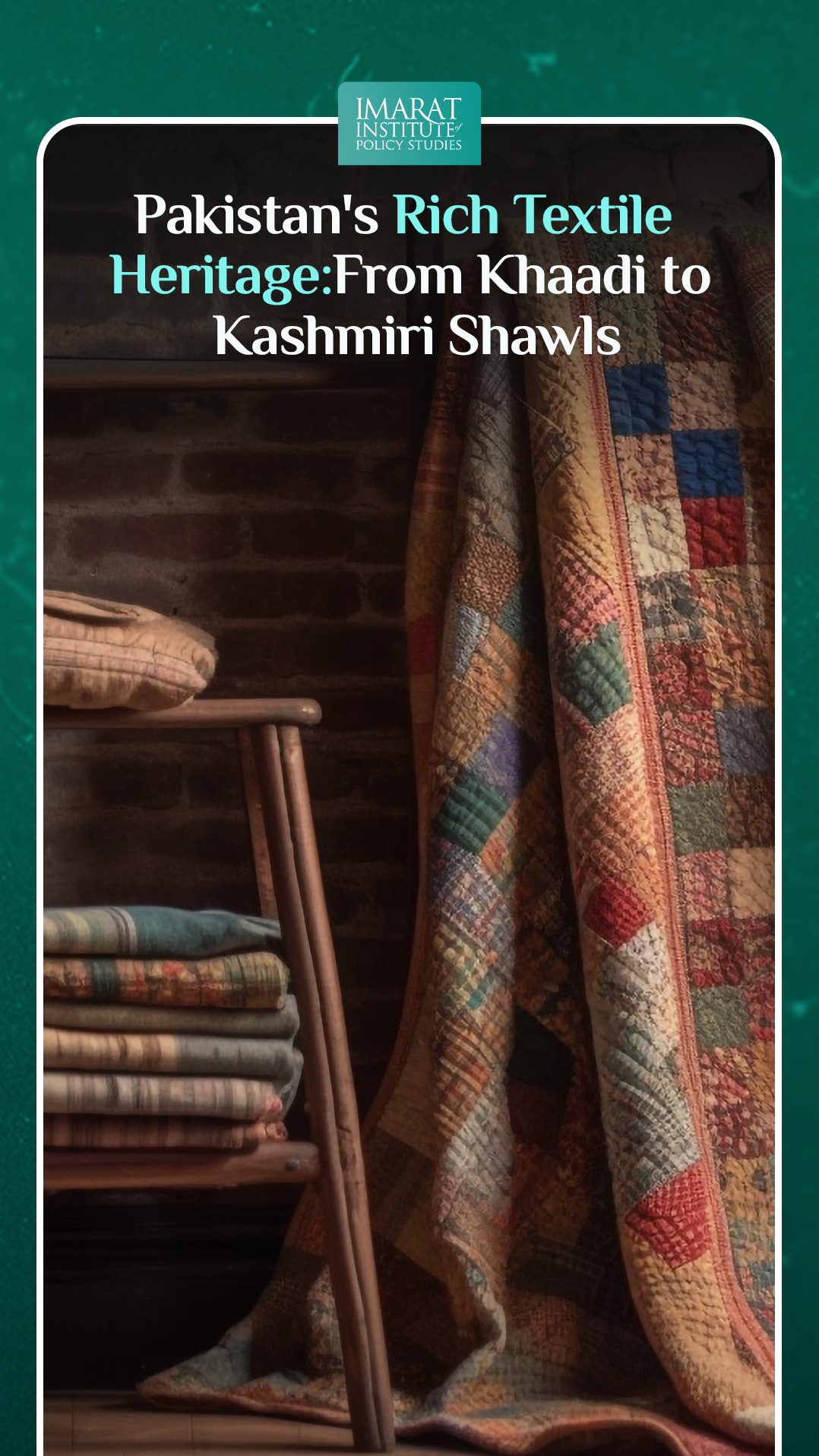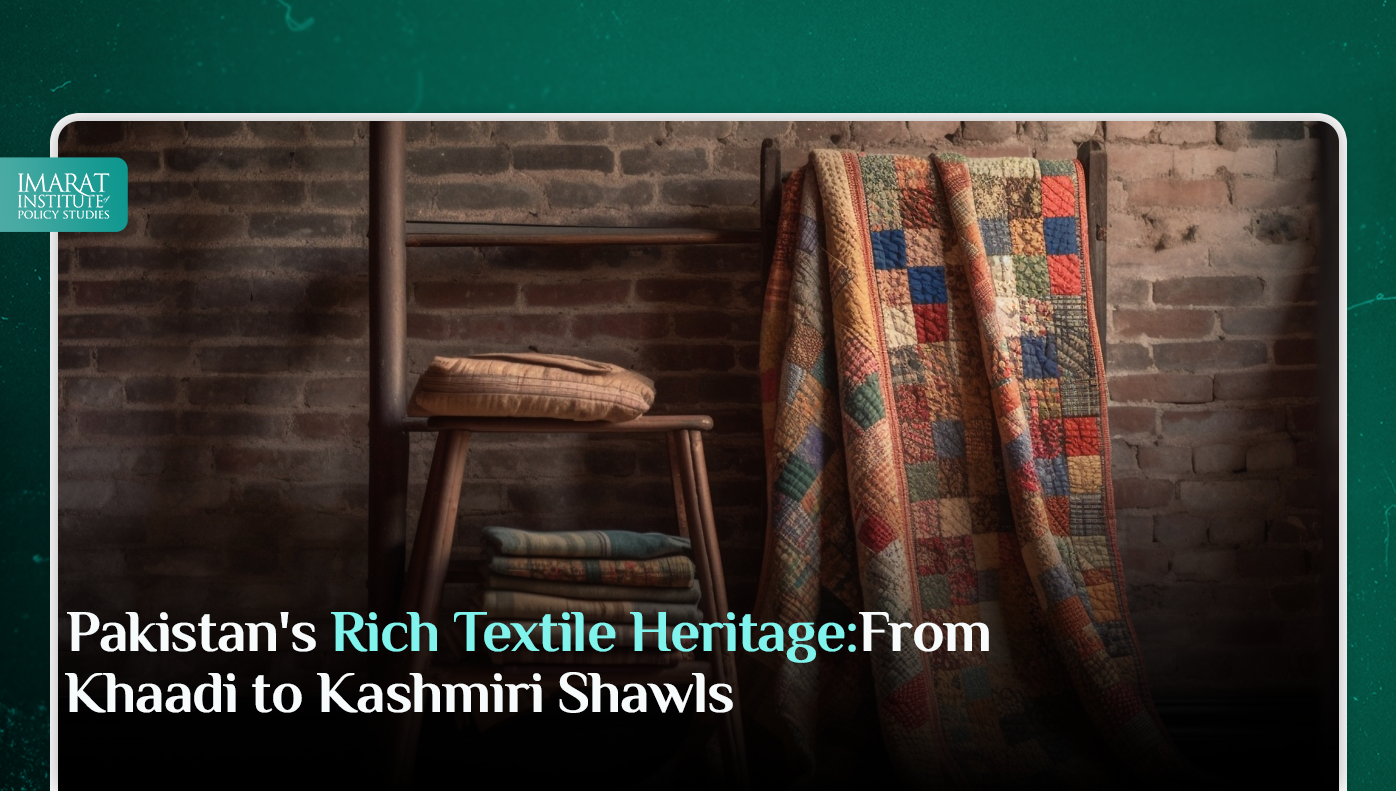Introduction
Pakistan’s textile heritage is a vibrant tapestry woven with centuries of craftsmanship, cultural diversity, and artistic expression. From the intricately embroidered fabrics of Sindh to the luxurious Kashmiri shawls of the north, Pakistan’s textile industry encompasses a rich array of traditions, techniques, and textiles that reflect the country’s cultural heritage and creative ingenuity. In this blog, we’ll embark on a journey through Pakistan’s rich textile heritage, exploring the significance of iconic textiles such as Khaadi, Ajrak, and Kashmiri shawls, and celebrating the artisans who keep these traditions alive.
The Legacy of Handcrafted Textiles
Handcrafted textiles have been an integral part of Pakistan’s cultural identity for centuries, embodying the country’s rich history, traditions, and craftsmanship. Artisans across Pakistan have mastered a wide range of textile techniques, from handloom weaving and block printing to embroidery and dyeing, passing down their skills from generation to generation. These time-honored techniques are not only a source of livelihood for many communities but also a testament to Pakistan’s textile heritage and cultural resilience.
Khaadi
Khaadi, which means “hand-woven” in Urdu, is a quintessential symbol of Pakistan’s textile heritage, renowned for its handwoven fabrics, intricate embroidery, and artisanal craftsmanship. Originating from rural communities in Sindh and Punjab, Khaadi textiles showcase a unique blend of traditional techniques and contemporary designs, reflecting the cultural diversity and creativity of Pakistan. From vibrant cotton kurtas and shalwar kameez suits to elegant lawn prints and embroidered ensembles, Khaadi’s creations celebrate the beauty of handcrafted textiles and the artisans who bring them to life.
Ajrak
Ajrak, a traditional block-printed textile, holds a special place in Pakistan’s textile heritage, particularly in the Sindh province. Dating back over 4,000 years, Ajrak is characterized by its distinctive geometric patterns, intricate motifs, and vibrant colors, created using natural dyes and wooden blocks. The art of Ajrak printing is passed down through generations of artisans, who meticulously carve intricate designs onto wooden blocks and hand-print them onto fabric, resulting in exquisite textiles prized for their beauty and cultural significance. Ajrak fabrics are often used to make garments, shawls, and home furnishings, serving as a symbol of identity and pride for the people of Sindh.
Phulkari
Originating from the Punjab region, Phulkari is an embroidery technique characterized by its colorful floral motifs, intricate patterns, and fine craftsmanship. Traditionally worn by women as part of their bridal trousseau or festive attire, Phulkari textiles are hand-embroidered with silk or cotton threads on a coarse fabric, creating stunning works of art that capture the vibrancy and spirit of Punjab’s cultural heritage. Phulkari embroidery continues to thrive in Pakistan, with artisans preserving this centuries-old tradition and incorporating it into contemporary fashion and home decor.
Kashmiri Shawls
Renowned for their luxurious warmth, exquisite craftsmanship, and timeless elegance, Kashmiri shawls are coveted treasures that trace their origins to the Kashmir Valley in the Himalayan region. Woven from fine cashmere wool, Pashmina shawls are renowned for their softness, lightness, and intricate needlework, including hand embroidery, needlepoint, and intricate motifs inspired by nature and Mughal art. The art of Kashmiri shawl-making is a labor-intensive process that requires skilled artisans to hand-spin, dye, weave, and embroider each shawl, resulting in heirloom-quality textiles prized for their beauty and craftsmanship.
Challenges and Opportunities
While Pakistan’s textile heritage is a source of pride and cultural identity, it also faces various challenges that threaten its sustainability and viability in the modern era.
Economic Pressures: The globalization of the textile industry and the rise of mass-produced, machine-made textiles have placed economic pressures on traditional artisans and craftsmen, many of whom struggle to compete with cheaper, factory-produced alternatives. As a result, traditional textile crafts are at risk of being marginalized or lost altogether, jeopardizing the livelihoods of artisans and the preservation of Pakistan’s cultural heritage.
Technological Advancements: While technological advancements have led to innovations in textile production and design, they have also contributed to the decline of traditional handcrafted textiles. Automated machinery and digital printing techniques offer faster, cheaper alternatives to handcrafted textiles, posing a challenge to artisans who rely on traditional techniques and skills. Balancing the preservation of traditional craftsmanship with the adoption of modern technologies is essential for the sustainable growth of Pakistan’s textile industry.
Sustainability and Environmental Concerns: The use of synthetic dyes, chemical treatments, and non-biodegradable materials in textile production poses environmental risks and sustainability challenges. Traditional textiles, which often utilize natural dyes, organic fibers, and eco-friendly techniques, offer a more sustainable alternative to mass-produced textiles. Embracing sustainable practices, such as using natural dyes, promoting organic farming, and supporting fair trade initiatives, can help mitigate the environmental impact of textile production and preserve Pakistan’s natural resources for future generations.
Cultural Appropriation: The commercialization and appropriation of traditional textile designs and motifs without proper attribution or respect for cultural heritage pose ethical and cultural challenges. Protecting traditional designs, techniques, and intellectual property rights is essential for safeguarding the integrity and authenticity of Pakistan’s textile heritage and ensuring that artisans receive fair recognition and compensation for their work.
Preserving Pakistan’s Textile Heritage
Despite the challenges facing Pakistan’s textile heritage, there are numerous opportunities to preserve, promote, and revitalize traditional textile crafts for future generations.
Education and Training: Investing in education and training programs that teach traditional textile techniques and skills to the younger generation is crucial for preserving Pakistan’s textile heritage and ensuring the continuity of artisanal traditions. By providing opportunities for apprenticeships, workshops, and vocational training, artisans can pass down their knowledge and expertise to the next generation of textile craftsmen.
Market Access and Fair Trade: Creating market access and fair trade opportunities for traditional artisans can help support their livelihoods, empower local communities, and promote the value of handcrafted textiles in the global marketplace. Supporting initiatives such as craft fairs, artisan cooperatives, and online marketplaces can connect artisans with consumers who appreciate the beauty, quality, and cultural significance of traditional textiles.
Innovation and Collaboration: Encouraging innovation and collaboration between traditional artisans, designers, and entrepreneurs can drive creativity and revitalization in Pakistan’s textile industry. By combining traditional techniques with modern design aesthetics, artisans can create innovative products that appeal to contemporary consumers while preserving the authenticity and heritage of Pakistan’s textile traditions.
Cultural Preservation and Documentation: Documenting and preserving Pakistan’s textile heritage through research, documentation, and archival initiatives can help raise awareness of its cultural significance and promote appreciation for traditional textile crafts. Museums, galleries, and cultural institutions can play a vital role in showcasing traditional textiles, educating the public about their history and cultural significance, and fostering pride in Pakistan’s rich textile heritage.
Conclusion
Pakistan’s textile heritage is a treasure trove of artistic expression, cultural identity, and craftsmanship that reflects the country’s rich history, traditions, and creativity. From the hand-woven fabrics of Khaadi to the intricate embroidery of Kashmiri shawls, Pakistan’s textile industry encompasses a diverse array of traditions, techniques, and textiles that are celebrated and admired worldwide. By preserving, promoting, and revitalizing traditional textile crafts, Pakistan can ensure the continued vitality and sustainability of its textile heritage for generations to come.
This article is written by Shaan Abbas. Shaan is a research analyst at the Iqbal Institute of Policy Studies (IIPS).



Leave a Reply